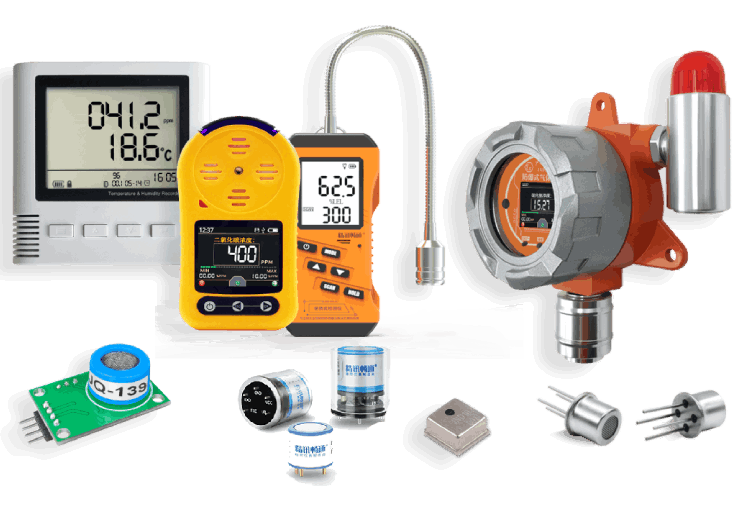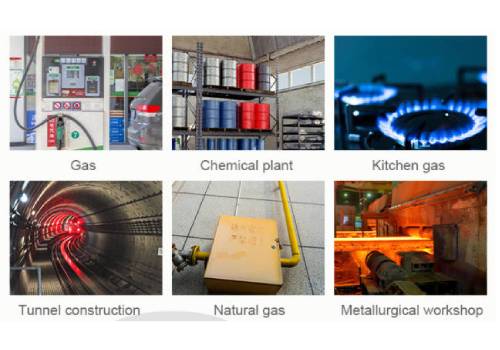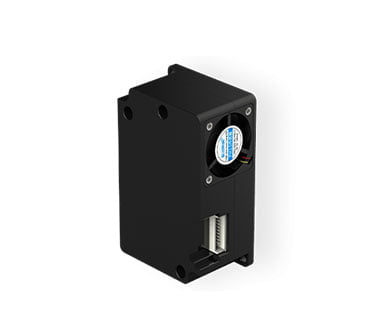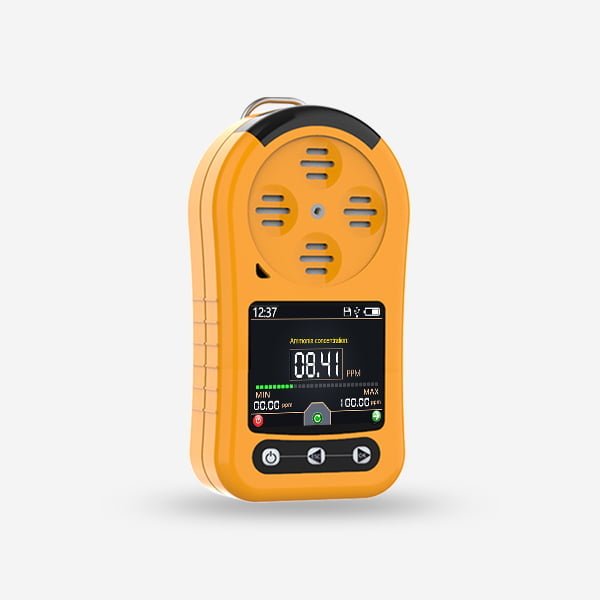Gas detectors are essential devices used to monitor and detect the presence of hazardous gases in various environments, including industrial facilities, laboratories, and public spaces. These detectors are crucial for ensuring the safety of personnel, preventing potential hazards, and maintaining regulatory compliance. Gas detector are available in different types, each designed to detect specific gases and operate based on distinct principles and technologies. In this essay, we will explore the diverse types of gas detector, including their underlying detection mechanisms, applications, and key features.
Types of Gas Detectors

Gas detectors can be broadly categorized into several types based on their detection principles, sensor technologies, and applications. The main types of gas detector include:
Fixed Gas Detector
Fixed gas detectors are stationary devices designed to continuously monitor the presence of gases in specific locations, such as industrial facilities, refineries, and chemical plants. These detectors are permanently installed in strategic areas to provide real-time monitoring of gas concentrations. Fixed gas detectors are available in various sensor technologies, including electrochemical, infrared, catalytic bead, and photoionization detectors (PID). They are suitable for applications where continuous monitoring and early detection of gas leaks are critical for safety and process control.
Portable Gas Detectors
Portable gas detectors are handheld or wearable devices that allow users to monitor gas concentrations while moving within a facility or performing fieldwork. These detectors are commonly used by first responders, industrial workers, and safety personnel to assess the presence of hazardous gases in confined spaces, construction sites, and emergency response situations. Portable gas detectors are available in diverse sensor technologies, such as electrochemical, semiconductor, and PID sensors, providing flexibility and mobility for gas detection applications.
Single Gas sensor
Single gas detectors are designed to detect and monitor the presence of a specific gas or vapor. These detectors are commonly used for monitoring individual gases, such as carbon monoxide (CO), hydrogen sulfide (H2S), oxygen (O2), or volatile organic compounds (VOCs). Single gas detectors are available in compact, handheld designs and are widely used in industrial, environmental, and personal safety applications where the targeted gas poses a specific risk.
Multi-Gas sensor
Multi-gas detectors are capable of simultaneously monitoring and detecting the presence of multiple gases in the environment. These detectors are essential for applications where exposure to a combination of gases is possible, such as confined space entry, industrial hygiene monitoring, and emergency response scenarios. Multi-gas detectors are equipped with sensors for detecting various gases, including combustible gases, toxic gases, and oxygen levels, providing comprehensive monitoring capabilities in diverse environments.
Wireless Gas sensor
Wireless gas detectors utilize wireless communication technologies to transmit gas concentration data to centralized monitoring systems or control rooms. These detectors offer the advantage of remote monitoring, data logging, and real-time alerts without the need for extensive wiring or cabling. Wireless gas detectors are suitable for applications where the installation of traditional wired systems is impractical or cost-prohibitive, such as large industrial facilities, oil and gas installations, and remote monitoring sites.
Detection Mechanisms and Sensor Technologies
Gas detectors operate based on different detection mechanisms and sensor technologies, each suited for detecting specific types of gases and environmental conditions. The most common sensor technologies used in gas detectors include:
- Electrochemical Sensors: Electrochemical sensors utilize chemical reactions to generate electrical signals proportional to the concentration of specific gases. These sensors are commonly used for detecting toxic gases, such as hydrogen sulfide, carbon monoxide, and chlorine, and are known for their high sensitivity and selectivity.
- Infrared (IR) Sensors: Infrared gas detector measure the absorption of specific wavelengths of infrared light by target gases, allowing for the accurate detection of gases such as methane, carbon dioxide, and hydrocarbons. IR sensors are suitable for applications requiring high accuracy and stability in gas detection.
- Catalytic Bead Sensors: Catalytic bead sensors detect the presence of combustible gases by measuring the heat of combustion generated when the gas comes into contact with a heated catalyst. These sensors are widely used for monitoring flammable gases, such as methane, propane, and hydrogen, and are known for their fast response times and robust performance.
- Photoionization sensor (PID): PID sensors utilize ultraviolet light to ionize gas molecules, producing a measurable electrical current proportional to the gas concentration. These sensors are effective for detecting volatile organic compounds (VOCs) and other hazardous gases with low ionization potentials, making them valuable for industrial hygiene and environmental monitoring applications.
Applications and Considerations
Gas detectors are employed across a wide range of applications to ensure safety, environmental compliance, and process control. Some common applications of gas detector include:

Industrial Safety: Gas detector are essential for safeguarding workers in industrial environments where exposure to toxic, flammable, or oxygen-deficient atmospheres can pose significant risks. Industries such as oil and gas, chemical processing, and manufacturing rely on gas detector to protect personnel and prevent accidents.
Environmental Monitoring: Gas sensor play a critical role in environmental monitoring and air quality assessments, particularly in settings where the release of pollutants or hazardous gases can impact public health and ecological balance. Environmental agencies, regulatory bodies, and research institutions utilize gas sensor to monitor emissions, industrial discharges, and indoor air quality.
Confined Space Entry: Gas detectors are indispensable tools for assessing the air quality and potential hazards in confined spaces, such as storage tanks, tunnels, and manholes. Before entering confined spaces, workers use gas sensor to identify the presence of toxic gases, combustible vapors, or oxygen-deficient atmospheres to ensure safe working conditions.
Emergency Response: First responders, firefighters, and hazmat teams rely on gas sensor to assess the presence of hazardous gases during emergency incidents, including chemical spills, industrial accidents, and natural disasters. Gas detectors enable rapid identification of toxic or flammable gases, guiding emergency response efforts and protecting personnel.
When selecting gas sensor for specific applications, several factors should be considered, including the target gases to be detected, measurement range, sensor technology, environmental conditions, regulatory requirements, and operational considerations. Additionally, factors such as sensor sensitivity, response time, accuracy, and reliability are crucial for ensuring effective gas detection and monitoring.
Conclusion
Gas detector are vital tools for ensuring safety, environmental protection, and regulatory compliance across diverse industries and applications. By understanding the various types of gas detectors, including fixed, portable, single gas, multi-gas, and wireless sensor , as well as the underlying detection mechanisms and sensor technologies, users can make informed decisions when selecting the most suitable gas detection solutions for their specific needs. Gas sensor play a pivotal role in safeguarding personnel, preventing hazardous incidents, and maintaining safe working environments, making them indispensable devices for gas detection and monitoring.





